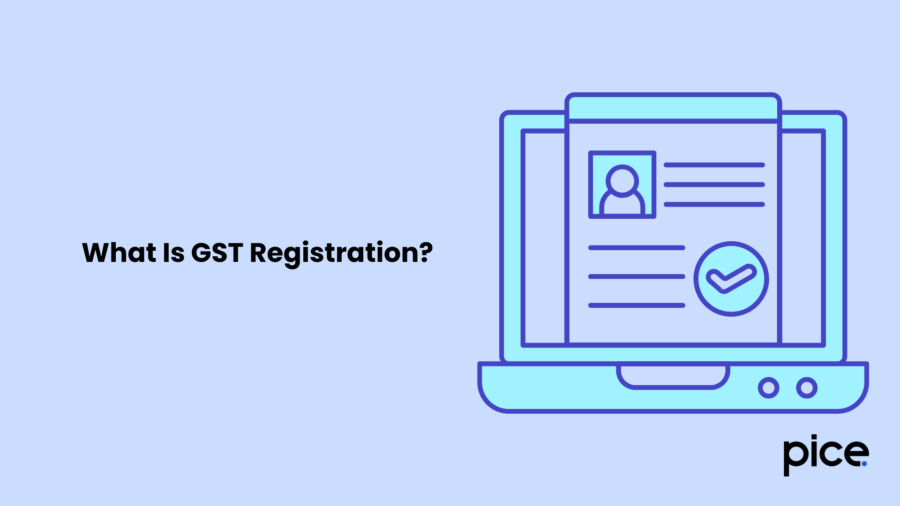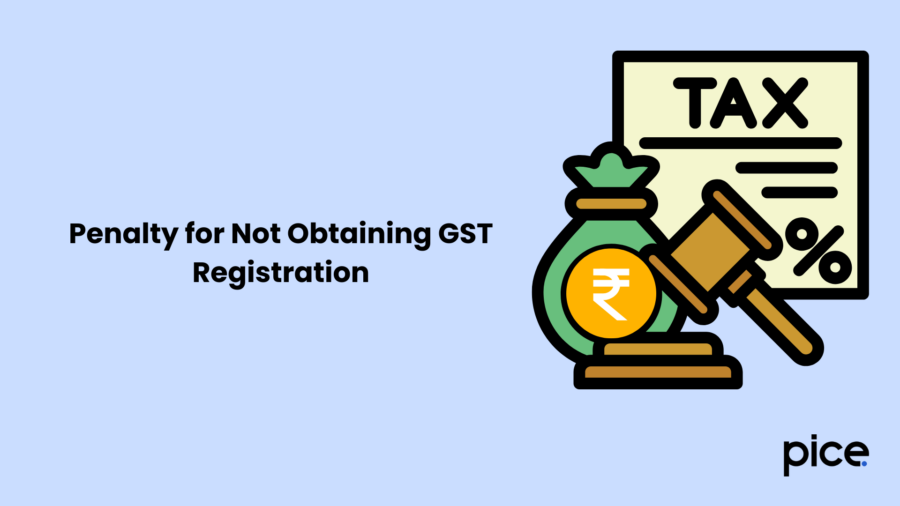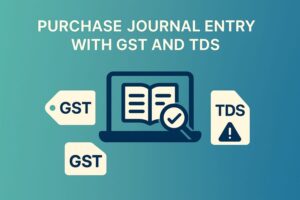Guide for GST Registration Process Online
- 9 Apr 25
- 11 mins

Guide for GST Registration Process Online
- What Is GST Registration?
- Who Should Obtain the GST Registration?
- Benefits of GST Registration
- How to Apply for GST Registration?
- How to Download the GST Registration Certificate?
- GST Registration Fees
- Exemption to GST Registration
- Documents Required for GST Registration
- Penalty for Not Obtaining GST Registration
- Conclusion
Key Takeaways
- GST registration is mandatory for businesses exceeding the prescribed turnover thresholds to comply with tax laws and claim input tax credits.
- The process is fully online via the GST portal, ensuring a smooth, paperless, and efficient experience.
- No government fee is charged for GST registration, but professional consultancy may involve costs.
- Failure to register under GST can lead to substantial penalties and interest on the tax due.
- Exemptions apply to small businesses, agriculturists, and entities dealing only in exempt supplies.
Goods and Services Tax (GST) is a comprehensive indirect tax levied on the supply of goods and services in India. GST has replaced multiple indirect taxes, simplifying the taxation system. Every business with a turnover exceeding the prescribed threshold must register under GST.
The GST registration process has been made seamless through the online portal, ensuring efficiency and ease for taxpayers. This GST registration mandate for businesses with an aggregate annual turnover beyond the threshold limit. Moreover, registering for GST is crucial to avail of input tax credits, comply with tax laws, and expand business operations.
Learn about the GST registration process here for a seamless experience.
What Is GST Registration?

GST (Goods and Services Tax) registration is the process of obtaining a unique registration number for a company based on the PAN card number of the business. It allows enterprises to collect GST on behalf of the government.
Further, businesses can claim an input tax credit (ITC) on inward supplies (purchases). To comply with GST laws, companies with a specific annual aggregate turnover threshold need to register themselves under GST.
Who Should Obtain the GST Registration?
Here are the entities and individuals who need to obtain GST registration:
- If you are an individual registered under earlier tax laws such as service tax, VAT (Value-added Tax), or undertaking inter-state supply (taxable supply), you need to register under GST mandatorily.
- If you are a business with an annual turnover of more than 40 lakhs, 10 lakhs, or 20 lakhs, depending on your business type, you need to register under GST.
- If you are a non-resident taxable person or a casual taxable person, you need to register under GST laws.
- Input Service Distributors (ISD) and agents of suppliers
- If you are an individual paying tax under the reverse charge mechanism (RCM), you must be GST-registered.
- In case you are an e-commerce aggregator operating a business using e-commerce platforms, you need to be GST-registered.
- If you are an individual located outside India rendering services related to online information and database access or retrieval services to a person in India, excluding a registered taxable person. In that case, you need to be registered under GST.
Benefits of GST Registration
To understand the benefits of GST registration, read the pointers discussed below:
- Reduces the Cascading Tax Effect: GST is a unified tax imposed on the supply of goods and services, eliminating the cascading effect of taxation or tax on tax. Unlike earlier taxes like VAT or service tax, GST does not increase the price of goods and services as it avoids double taxation.
- Ensures Transparency: GST is a transparent tax, and the government, taxpayer, and tax collector know the amount of tax payable and paid.
- Reduces Incidents of Tax Evasion: As the GST authorities define the GST laws and compliance norms concisely, taxpayers' incidents of tax evasion can be significantly reduced.
- Composition Scheme for Small Firms: Composition taxpayers with annual turnover between ₹20 lakh and ₹75 lakh can benefit from GST registration, which allows them to pay lower taxes on goods and services supplied.
- Higher Registration Threshold: The GST laws define the annual turnover threshold as ₹20 lakh, wherein small taxpayers are exempted from paying GST. On the flip side, under the previous tax laws, the annual turnover threshold has been ₹5 lakh of VAT with variations across states in India.
- Reduced Compliance Burden: GST laws are simplified compared to earlier tax laws, so taxpayers can enjoy a reduced compliance burden. This further minimises the compliance cost for each taxpayer.
- Advantages for Online Merchants: Under the VAT system (previous taxation system), there have been limited laws and regulations pertaining to online merchants and their supply of goods and services. However, as the GST laws define these norms in a simplified manner, online merchants can reap the benefits of the GST system.
- Regulated Unorganised Sector: The unorganised sector in India includes the textile and construction industry. While the earlier taxation system eliminated online tax payment provisions for this sector, the GST rules significantly enabled these provisions.
- Improved Logistics Efficiency: The GST laws segregate CGST, SGST, and IGST (Central Goods and Services Tax, State Goods and Services Tax, and Integrated Goods and Services Tax) for intrastate and interstate transactions. Unlike the previous taxation system, it offers a seamless supply of goods and services between and within the states of India. As a result, the logistics and warehouse system has significantly improved with the introduction of GST.
How to Apply for GST Registration?
You can follow the process of GST registration mentioned below:
Step 1: Visit the unified GST portal.
Step 2: Navigate to the ‘Services’ option and select the ‘Registration’ option.
Step 3: Select the ‘New Registration’ option and enter the necessary business details, such as the business's valid email address, PAN number, and registered mobile number.
Step 4: Ensure you click the ‘Proceed’ option to complete the GST registration application process and receive the GSTIN (Goods and Services Tax Identification Number).
How to Download the GST Registration Certificate?

Once you complete registration under GST, here are the simple steps to download the GST registration certificate:
Step 1: Log in to the official GST portal using your valid credentials.
Step 2: Navigate to the ‘Services’ tab and then ‘User Services’.
Step 3: Click on the ‘View/ Download Certificates’ option.
Step 4: Select the ‘GST Registration Certificate’ option.
Step 5: Fill in the necessary details like GSTIN and ARN.
Step 6: Click on the ‘Download’ option.
Step 7: You can download the certificate in PDF format. You can save or take a printed copy of the certificate based on your needs for future reference.
GST Registration Fees
It is important to clarify that the Indian government does not charge a direct fee for GST registration when done through the official GST portal. However, costs can arise from professional assistance. Businesses often seek help from chartered accountants or tax consultants, who charge for their services. These fees vary based on the consultant's expertise and the complexity of the registration.
Factors like the structure (proprietorship, partnership, company) of the business influence these professional charges. Therefore, while the registration itself is free, indirect costs are shared. It is also important to remember that penalties are in place for businesses that are required to register but fail to do so.
Exemption to GST Registration
Here is the list of entities exempted from GST registration:
- Small businesses with an aggregate annual turnover not exceeding the limit for GST registration.
- Individuals or entities dealing in exempt supply.
- Agriculturalists selling cultivated products.
- Individuals or entities dealing with goods or services are not liable to be taxed under GST or are wholly exempted.
- Categories of individuals exempted by the government.
Documents Required for GST Registration
The documents required for GST registration vary based on the type of entity applying for it, that is, individuals, businesses or others. The details are discussed below:
Documents Required for GST Registration for Individual
Here are the documents required for GST registration for individuals and sole proprietorship firms:
- PAN card of the individual or proprietor
- Photograph of the proprietor or individual
- Address proof
- Aadhaar card of the proprietor or individual
- Bank details of the individual or proprietor
Documents Required for GST Registration of Company
A company needs the following documents for GST registration:
- PAN card of the company
- Directors’ PAN card
- PAN card of the authorised signatory
- Company’s address proof
- Directors’ address proof
- Certificate of Incorporation from the Ministry of Corporate Affairs
- Articles of Association and Memorandum
- Proof of signatory’s appointment
- Aadhaar card of the signatory
- Company’s bank account details
Documents Required for GST Registration of Hindu Undivided Family
Here are the documents that a Hindu Undivided Family (HUF) needs to acquire GST registration:
- HUF’s PAN card
- Karta’s PAN card
- Business address proof
- Bank account details
- Owner’s photograph
Documents Required for GST Registration of Partnerships and LLP
A partnership firm or LLP needs to provide the following documents for GST registration:
- Partners’ address proof
- PAN card of the partner
- Bank account details of the firm
- Partnership deed
- LLP registration certificate
- Partners’ photographs
- Principal business address proof
- Aadhaar card of the authorised signatory
- Proof of appointment of authorised signatory
Penalty for Not Obtaining GST Registration

Here are the applicable penalties for different instances of non-registration of GST:
- If you fail to obtain GST registration, a 10% penalty applies on the outstanding tax amount, or ₹10,000 penalty applies (whichever is higher).
- In case a taxable person evades taxes purposely, the penalty is equivalent to the tax amount.
- Non-registration of GST might attract interest in addition to a penalty on the tax amount due.
As a business, ensure you register under GST within the stipulated deadline to avoid penalties and interest charges. Further, ensure you pay taxes within the due date to avoid paying late fees, interest and charges.
Notably, the types of GST registration vary based on the kind of businesses (business verticals) and aggregate annual turnover threshold. It may vary based on the principal place of business. For instance, a person in Himachal Pradesh and the North-eastern states has a lower turnover threshold for GST registration. Moreover, a casual taxpayer and a taxpayer under the reverse charge mechanism have different GST payable to the state and central government.
Conclusion
Overall, the GST registration process in India helps businesses register under the GST system to claim input tax credits on inward supplies. This further allows individuals and entities to reduce the tax burden and liability on outward supplies.
GST registration in India is crucial to avoid penalties, interest and late fees on the outstanding tax amount. Ensure you register your business within the deadline and pay GST within the stipulated time period to avoid additional penalties.
💡If you want to streamline your payment and make GST payments via credit or debit card or UPI, consider using the PICE App. Explore the PICE App today and take your business to new heights.
 By
By 

















